It’s February 23 2007. Travelling north from London that day by rail, you have essentially two choices: the East Coast Main Line - route of the celebrated Flying Scotsman - and the West Coast Main Line, once the preserve of ‘Scots’ and ‘Coronations’ before electrification brought the AL1s and Class 87s.
You take the latter, boarding one of Virgin Trains’ Pendolinos - the tilting trains, the ‘what-the-APT-should-have-been’ trains, the trains not long from Alstom’s workshops. And at 1715, the signal having been given and the ‘right away’ received, you feel it pull out and rumble over the points at Euston’s station throat. You’re on your way to Glasgow - on City of Glasgow - or so you think…
You settle back to read, to snooze, or maybe take an early evening drink. You’re as serene as the scenes that flicker by the window at Watford Junction, Warrington and Wigan, but by Oxenholme the outlook starts to darken.
Just before 2010, the train begins to rock and sway. Bags, bottles and books begin to fly as the movement intensifies. Some think it’s a collision, some think it’s high winds. Within seconds, the wheels are bouncing on ballast… at 95mph. You hold on as all nine vehicles leave the line, eight of which jackknife down the embankment. Fortunately, you’re not in one of the five which turn on their sides, or the leading vehicle, which leaps into the air. Others aren’t quite so fortunate.
This was the first major train accident since the Ufton Nervet level crossing collision in 2004. That had been down to a suicidal motorist blocking the line. Time would tell what had happened here, but time was of the essence.
The driver, Iain Black, had been thrown from his seat and rendered unconscious, but when he came to he reached for his mobile phone and called an off-duty colleague, imploring him to tell ‘control’ to stop all traffic on the Up line. He didn’t know the derailment had already put all signals in the immediate vicinity back to danger.
The first ambulance and fire crews arrived just after 2045, and would soon be joined by RAF helicopters, the International Rescue Corps, and many others - eventually almost 500 staff would be on site. Operations were hindered by rain, darkness, and access problems caused by narrow country lanes and muddy fields. The site of the derailment - Grayrigg in Cumbria - was remote and bleak, and some emergency vehicles had to be towed by farm vehicles or tractors. The work was hard and treacherous, but by 2247 the evacuations had been completed.
Of the 109 people on board, 28 suffered serious injuries. Initially, the survivors took shelter at the local primary school. Hospitals were put on standby, though not all received patients. Most were soon discharged, but not 84-year-old Margaret Masson, who sadly succumbed to her injuries while being airlifted to safety.
Virgin Trains Chairman Richard Branson visited the site the next morning. He told reporters that Black was a hero, believing him to have “tried to stop the train” and “stay in his seat to ensure the safety of passengers”. From his hospital bed, Black told The Times he was “distraught” that Margaret Masson had died, and saddened that so many people had been injured.
Branson also paid tribute to the train, which he compared to a “tank”, adding that if it had been “old stock” then the number of “injuries and mortalities would have been horrendous”. He wasn’t wrong; imagine a Class 50 and nine Mk 1s in the same situation. But one death is one too many. One death is a shattered family, an empty seat, a void in the life of a friend.
The train derailed on a crossover at Lambrigg groundframe. It was therefore not improbable that the condition of the points was in the causal chain. Bob Crow, the late RMT leader, said as much on the BBC News. Early statements by British Transport Police Chief Superintendent Martyn Ripley backed it up. Experts drew parallels with the 2002 Potters Bar crash, and agreed that if the condition of the points was indeed in the chain then the maintenance regime was likely to be in it, too. Unlike at Potters Bar, however, the maintenance regime had been taken in-house by Network Rail, meaning private contractors weren’t in the frame this time.
A check of over 700 similar sets of points found “nothing of concern”. The Grayrigg set was removed by the Rail Accident Investigation Branch (RAIB) for what would be its most important investigation to date. The interim report concluded that the immediate cause was, specifically, the condition of the stretcher bar arrangement of the crossover’s facing points. Of the three stretcher bars - which hold the point’s moving blades the correct distance apart - one wasn’t in position and one had nuts and bolts missing. Two were also fractured.
The RAIB’s final report built on its first findings by confirming the failure of the points, and that a weekly inspection scheduled for February 18 - just five days before the accident - had not taken place. If it had, the state of the bolts would have been spotted, and the excessive residual switch opening - which resulted in the left-hand switch rail being struck by the inner faces of passing train wheels - would not have led to the ‘“rapid deterioration of the condition of the remaining stretcher bars and their fasteners”. But it didn’t, the reason being that the supervisor on the ground agreed to make a change to his inspection plan, and then forgot he’d done so. But, naturally, there was more to it than that.
There was nothing particularly special about the points. They had been built to a standard design in widespread use since the early 1970s. Their non-adjustable stretcher bars had been around even longer - over 50 years. The RAIB concluded that the design of the joint between the permanent way stretcher bar bracket and the switch rail at those, or any other similar points, was such that it could have been subjected to forces beyond its design capability.
This put a greater importance on regular inspection and maintenance if they were to be kept in a safe operating condition. The trouble was that Network Rail did not understand the fact that pointwork with non-adjustable stretcher bars behaved differently from other designs. Indeed, “the relationships between its design, usage, loadings, inspection and maintenance”, led the company “to consider that the risk associated with the design was low and [...] adequately controlled”. This also resulted in “an absence of clear and properly-briefed standards” for setting up and adjusting such points.
The performance of the train itself wasn’t brought into question. The RAIB agreed with Branson that the Pendolino “avoided, almost completely, a number of hazards”, noting in particular the robustness of the couplers (which generally held the carriages together), the anti-roll bar links (which ensured that most of the bogies remained attached), the penetration resistance of the bodyshell, and its impressive roll-over strength.
The RAIB also praised the train’s laminated windows, which largely kept passengers contained safely within, although two were injured after they’d been partially or wholly ejected through breakable emergency exit panes; the standard at the time permitted at least one non-laminated window per carriage, for egress. Some passengers in the leading vehicle had also been struck by reading light panels that had become detached.
The report included 29 recommendations. Some of these sought clarity on certain aspects of the train’s behaviour, but most involved the risks associated with maintaining points and crossings. Network Rail brought in better instructions, management and checks on basic visual inspections, surveyed the amount of residual switch opening on what it perceived to be the higher-risk points on its system, launched a rectification programme and started to analyse the loads and forces in its non-adjustable stretcher bar assemblies.
On January 13 2012, the Office of Rail Regulation (ORR) announced that the company would be prosecuted under Section 3(1) of the Health and Safety at Work Act 1974 for its “failure to provide and implement suitable and sufficient standards, procedures, guidance, training, tools and resources for the inspection and maintenance of fixed stretcher bar points”. It was later fined £4,118,037
The points which caused the derailment were removed and replaced with continuously-welded rails for 2.2 miles through the Grayrigg area.
A major train accident sticks in the national conscience, and its location alone - be it Quntinshill, Lewisham, Polmont or Potters Bar - is often enough to stir the memory and chill the blood. When the tenth anniversary of the Ladbroke Grove SPAD and collision drew near, I helped to write a Rail Safety & Standards Board (RSSB) report on the improvements in train accident safety the railway had made since that dark day. It’s still on our website, and in it we talked of the “extensive changes, including institutional reorganisation, significant growth and further investment” that had taken place during that decade.
The learning and improvements the industry accumulated since Ladbroke Grove meant that rail became ever safer. While 51 passengers lost their lives in train accidents between 1999 and 2008, fatalities have been decreasing since the early 1950s, when the introduction of BR’s Automatic Warning System (AWS) started to make inroads on the number of signals passed at danger. The situation improved still further following the widespread introduction of the more interventionist Train Protection and Warning System (TPWS) in 2003.
Among the improvements more relevant to Grayrigg, the report chimed with RAIB’s, and noted how RSSB’s research programme had contributed to the conclusion that the (then) current bogie attachment strength requirements were adequate. It added that City of Glasgow - which had been built to that standard - experienced “very limited bogie detachment compared to earlier accidents”, during which “significant numbers of bogies” had come off, torn into carriages and harmed those on board.
The same was true of the containment question. Analysis had shown that of the 51 fatalities, 20% had occurred through people being ejected through windows (usually when a carriage had turned onto its side). The report also made the important point that “the rail industry’s primary safety objective is to avoid accidents in the first place”, and while admitting that there will always be ”some residual risk associated with the transportation of people and goods”, it also referred to the vital role played by the learning that flows from operational experience, near misses and accidents.
Of course, this is something the industry - or whichever regulatory body oversees it - has been doing virtually since its inception. Early incidents such as the death of William Huskisson MP at the opening of the Liverpool & Manchester Railway in 1830, for example, led to the first Railway Regulation Act (1840), which required all injurious accidents to be reported to the Board of Trade.
Within 50 years, block signalling, interlocking and continuous braking on passenger trains had been made mandatory. There were further advances in the 20th century, ranging from continuous welded rails and multi-aspect signalling, through to the aforementioned AWS and TPWS (to say nothing of those all-important strides in crashworthiness). All of these have contributed to the ever-decreasing number of train accident fatalities, and the fact that only one person was killed at Grayrigg.
Statistical analysis is part of the RSSB’s stock-in-trade. Every year, we produce a safety performance report and present data on derailments, collisions, fires, fatalities and injuries to passengers, staff and members of the public. Each year since Grayrigg we’ve recorded zero passenger and workforce fatalities in train accidents.
This is important work: numbers are vital indicators and can help focus resource where it’s most needed. Some, however (at the RSSB and elsewhere in the industry), look beneath that impressive trend, and keep an eye on the daily incident reports and for anything that doesn’t look quite right. That’s because we live in an uncertain world. As safety expert James Reason wrote in 1997: “The large random component in accident causation means that ‘safe’ organisations can still have bad accidents, and ‘unsafe’ organisations can escape them for long periods. Bad luck can bring down the deserving, while good luck can protect the unworthy.”
‘Luck’ is a nasty little word for the safety practitioner, but it’s there all the same. And a glance at those reports will reveal how many near misses and irregular working events we’re having day in, day out. So we can say we’ve been ‘lucky’. But what can we say we’re doing about it?
The short answer is that - as both a listening and a learning organisation - the RSSB is doing quite a bit. Through our research programme, periodic safety reports, strategic risk papers, publications on incidents inside and outside the railway, the RED video series, Right Track magazine, and the analysis and support we provide, we help the industry to learn. Through our members (and more), we listen, record and share.
We also play a part in the accident investigation process by providing relevant training and guidance, by providing statistics to help RAIB set incidents into context, by offering expert knowledge from staff with extensive industry experience, and by bringing cross-industry groups together to tackle industry-wide issues.
Tieing much of this together is the Learning from Operational Experience annual report, which looks at some of the tools available to aid learning, and captures some of the lessons learned from Britain and around the world, while considering specific issues that can impact on rail operation and maintenance. The RSSB actively encourages those responsible for safety to use its findings, data and reports, but - through corporate learning and memory - to think and to ‘worry’ too.
That doesn’t mean learning is easy. How many times have you hit your thumb while hammering a nail and told yourself you’ll never do that again, only to put in a repeat performance the very next day? In a company, it’s even harder: companies comprise a number of different and disparate memories, which don’t always fit together perfectly, and which can change as staff retire, move on, or come in from elsewhere. When you expand the idea to a complex industry like rail, it becomes even more challenging.
One thing I’m always saying in my job is that ‘we combat complacency with continued vigilance’. In a fluid industry like ours, it’s the only way. The source material for the best learning opportunities often comes from the coal face, whether it’s part of routine incident logging, confidential reporting via CIRAS, the ‘Close Call’ system or simply having a management-level understanding of what’s actually happening ‘out there’. The key is to make sure we’re grasping this source material and briefing the learning back into the system.
The irony of Grayrigg is that it showed how much safer the railway of 2007 was than the railway of 1997, 1987, 1977 or 1967. In 2017, we’re safer still, but that doesn’t mean we can sit back and congratulate ourselves. What will be the next Grayrigg?
The RSSB’s review of the recent Croydon tram accident reassured that a similar overspeed incident is unlikely to happen on the main line network, because of the way the system is set up and operates. Technology has taken us a long way away from that scenario, but we still need to combine the numbers with the accident investigations, with the local issues, near misses and a long corporate memory to help make sure the zero stays a zero.
You can’t guard against bad luck, but you can minimise the chances of suffering catastrophic consequences from it. In this respect RSSB helps, by bringing the industry together, by cutting the data in every direction, and by telling the stories written by lessons learned the hard way.
My grateful thanks to Professor Anson Jack of the University of Birmingham for his vital assistance in preparing this article.
This feature was published in RAIL 820 on 11th February 2017

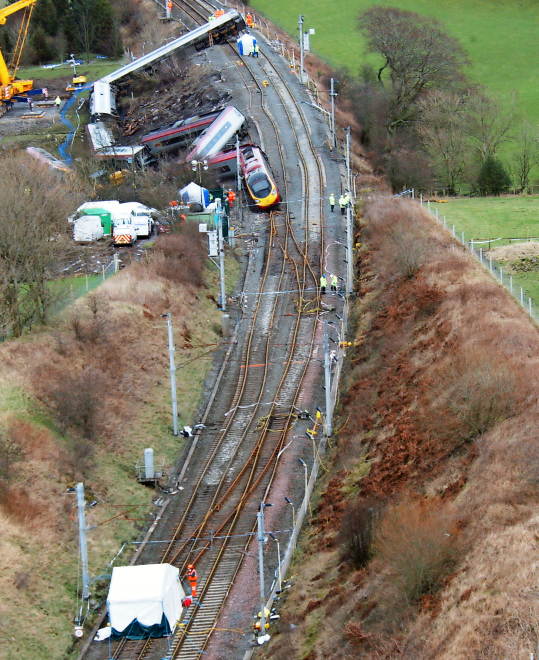
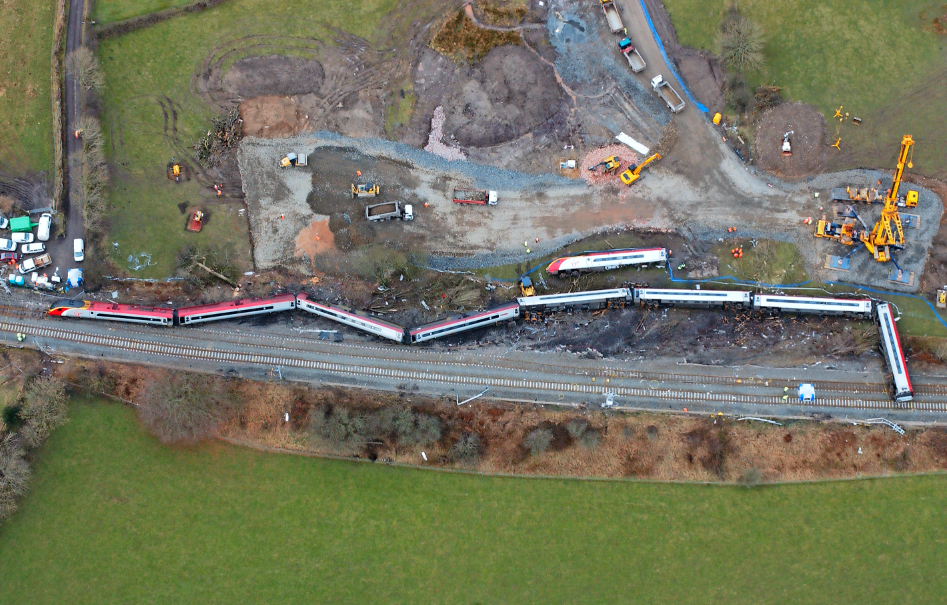
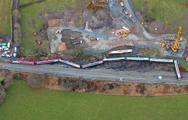
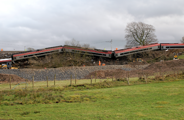
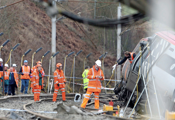

















Login to comment
Comments
No comments have been made yet.